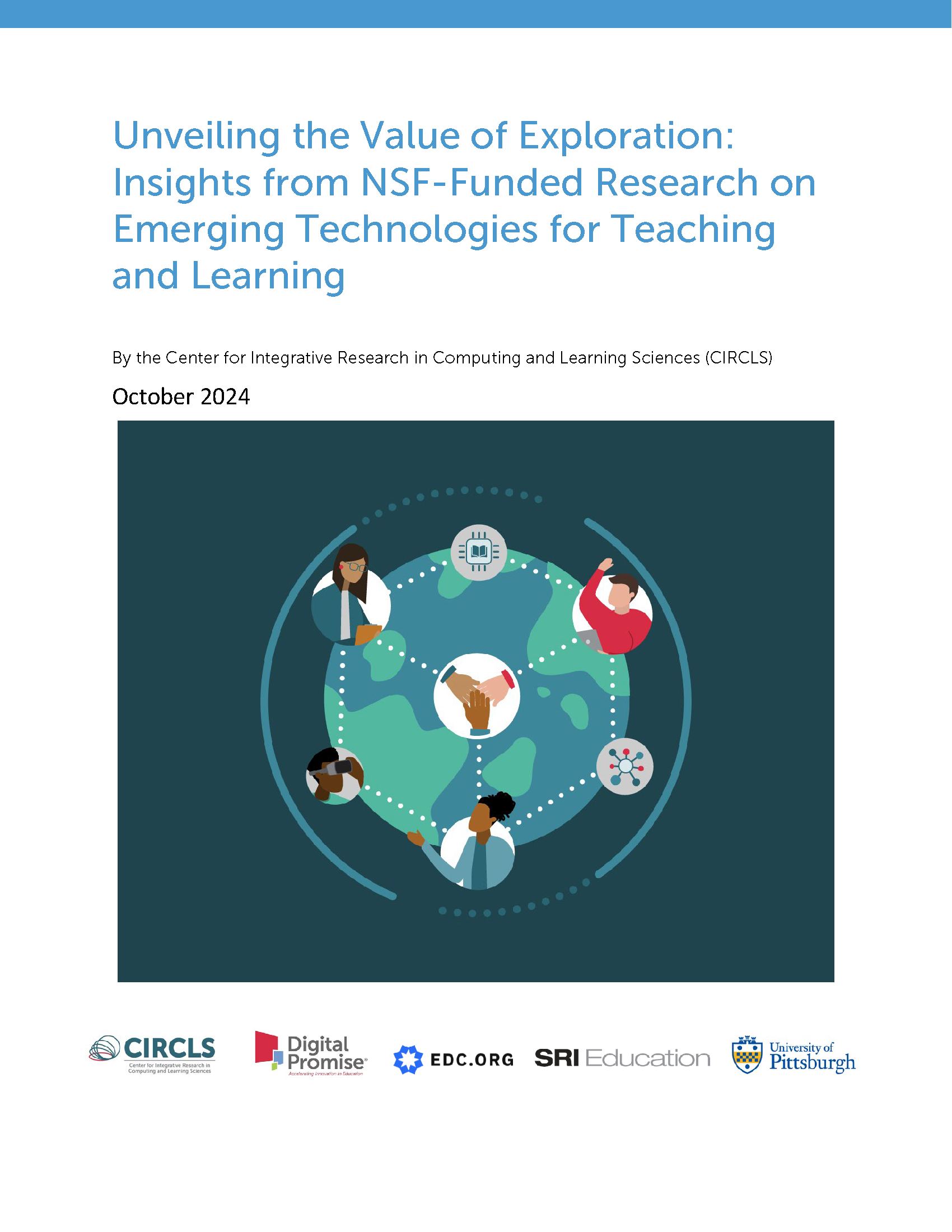
Introduction
New and emerging technologies, such as artificial intelligence (AI), are now rapidly permeating educational settings at all levels, including preK-12, postsecondary and workforce learning. More than ever, research on learning technologies is needed to provide necessary knowledge for guiding use of these technologies to advance teaching and learning, with attention to broadening participation in science, technology, engineering and mathematics (STEM).
In this report, we develop insights from the portfolios of the National Sciences Foundation (NSF) exploratory research programs: Cyberlearning, Research on Emerging Technologies for Teaching and Learning (RETTL) and Research on Innovative Technologies for Enhanced Learning (RITEL). For convenience, we will refer to these programs as NSF EXPs throughout. The focus of the report is to understand the value of interdisciplinary, exploratory research on these pressing topics.
Specifically, we examine the nature of exploratory research since 2017—a time period during which AI increased in prominence alongside other emerging technologies, including augmented/virtual reality, advanced simulations, new forms of adaptivity, and more. The portfolios were also highly focused on collaborations among computer and learning scientists, often working together with other areas of specialization (e.g., experts in STEM or other topics, in particular settings, and in design for equity).
The NSF portfolios stretch back further in time; for example, the Cyberlearning program started in 2010. Yet beginning in 2017, NSF’s solicitations for field-initiated research in these programs became highly focused on interdisciplinary, exploratory research. Now the researchers who received exploratory awards have had time to complete their investigations. Thus, it is a good time to ask:
- What questions, insights, and findings emerge when a research portfolio focuses intensively on exploratory research?
- What is the character of innovative, interdisciplinary, exploratory research?
- What does the field need in order to provide the knowledge required to guide effective use of emerging technology to increase learning and broaden participation?
Our team, based at the Center for Integrative Research in Computing and Learning Sciences (CIRCLS) has served as the community hub for research in NSF EXPs. We’ve had the role of mapping and analyzing the interdisciplinary, exploratory work conducted by many independent research teams. In this report, we serve this burgeoning research community by clarifying the nature of its work and highlighting the breadth and depth of the research.
By developing an understanding that rises above each individual project, we seek to inspire researchers in the community to hone its work going forward. We also aim to serve funders, both at NSF and elsewhere, who are thinking about why and how to fund interdisciplinary, exploratory research. Further, our CIRCLS team saw the need to cultivate the involvement of educators and emerging scholars engaged in innovative, interdisciplinary, exploratory research. We want to broaden the audiences by increasing understanding of both the knowledge that is emerging from this research and why educator and emerging scholar participation in exploratory research matters.

 Download the Report (PDF)
Download the Report (PDF)